�� ������������
Ϣ ��
- �� �� ̾��θ�����ˬ�ͤơ��ʥ�ƥ�줵��� ����
- �裸��̾��θ�����ˬ�ͤơʣ��ˡ�Veni, vidi, vici ���褿�����������ä���
�����WEB�ޥ����� Lingua 6 ��� �� 9 ���� 2 ������� 330 ��ˡ����� 4 ǯ 6 �� 25 ��ȯ�ԡ�ȯ�Լ� ���ľ��֡�ȯ�Խ� ������Ҹ���� ����������Ķ��ٻθ�2-11-3 ���ǥ����� ��������ҡ�ibox design�ˡ�(c) ������Ҹ���� 2024
| ||||||||||||||||||||||||||||||||||||||||||||||||||||||||||||||||||||||||||||||||||||||||||||||||||||||||||||||||||||||||||||||||||||||||||||||||||||||||||||||||||||||||||||||||||||||||
| |||||||||||||||||||||||||||
2023ǯ8��ʹ�ȯ�Ԥ��½�
����ʸ�ء�ʸ�������Ѹ�ء��Ѹ춵����������ʸ�ݺ��ʡ������ѽ�ʤ�
���ῷ����
| ����ʸ�ء�ʸ���� |
| 2024ǯ1�� |
| ��MY BEST �����롦�٥����١�On My Favorites by Saul Bellow�ˡʡֶ��ܸ��� MEMORIAL �������1�� ���ܸ�������2024ǯ1�A5Ƚ�ѷ�viii��366�ǡ�3,960�ߡ�3,600�ߡ��ǡˡ���嶵��� |
| 2023ǯ12�� |
| �ظ��奤���ꥹ����λҤɤ⤿������̵���ȼٰ���Ķ���ơ� ����ɧ����2023ǯ12���ϻȽviii��228�ǡ�3,520�ߡ�3,200�ߡ��ǡˡ�����ҡ� |
| �� |
| �Ѹ�ء��Ѹ춵�� |
| 2024ǯ8�� |
| ���ر����Х���롡���奴���å�����ν����١�Writing Gothic Fiction: Essays and Stories�� �֥饤���������������ĸ�������2024ǯ8�A5Ƚ250�ǡܸ���2�ǡ�2,530�ߡ�2,300�ߡ��ǡˡ�����ҡ� ��[����: ������§] |
| ���رѸ��ǥ��ؤξ��ԡ����⡼���û�Ԥ�ʸ��������� ������Ϻ����2024ǯ8�A5Ƚ232�ǡ��̺�60�ǡ�2,530�ߡ�2,300�ߡ��ǡˡ�����ҡ� |
| 2024ǯ7�� |
| �����ä�����Ρ�����ꥫ����ɽ����ŵ�ʥ��å�����ǡˡ١�Dictionary of American Colloquial Expressions (Abridged Edition)�� �Զ��ɻ�����2024ǯ7�A5Ƚvi��942�ǡ�3,960�ߡ�3,600�ߡ��ǡˡ�����ҡ� |
| 2024ǯ6�� |
| ���إߥ�ؼ�ͳ���ٸ�������2������ư���¤θ����� ������Ϻ����2024ǯ6�B6Ƚ294�ǡ�2,530�ߡ�2,300�ߡ��ǡˡ�����ҡ� |
| ���رѸ�츻��ŵ�ο����ǡϡ١�The Kenkyusha Dictionary of English Etymology�� ��߷˧ͺ�ԡ�2024ǯ6�B6�ѷ�Ƚ1720�ǡ�11,000�ߡ�10,000�ߡ��ǡˡ�����ҡ� |
| 2024ǯ4�� |
| �ز������������硽��������ư��Ǥ狼��� ������������2024ǯ4�AȽxii��268�ǡʲ����ǡ���̵������������ɡ�ư��YouTube�ˡ�3,080�ߡ�2,800�ߡ��ǡˡ�����ҡ� |
| �ء��������ӱѽϸ� ������ 1515�������ǥ���������ȡ����Ȥ虜������ɽ���١�The Front Line of English Idioms�� �ж������Τ��ůɧ�����Ĺ�������2024ǯ4�B6Ƚxiv��304�ǡʲ����ǡ���̵������������ɡˡ�1,870�ߡ�1,700�ߡ��ǡˡ�����ҡ� |
| 2024ǯ3�� |
| �����������ä���α�ʸ���饷�å��� ��������������2024ǯ3�A5Ƚxii��190�ǡʲ����ǡ���̵������������ɡˡ�1,760�ߡ�1,600�ߡ��ǡˡ�����ҡ� |
| �ؤ�äȥ����ꥹ�Ѹ�Ǥ���٤ꤿ��������UK ����ȥ͡�����ѡ��ե����ȥ����ɡҿ����ǡӡ� ����ľ�����ʥǥ������ޥ��å��ˡ�����2024ǯ3�A5Ƚ182�ǡʲ����ǡ���̵������������ɡˡ�2,200�ߡ�2,000�ߡ��ǡˡ�����ҡ� |
| 2024ǯ1�� |
| �رѸ촧��ɥ��١�Practice Exercises for Mastering English Articles�� �����»�����2024ǯ1�A5Ƚ200�ǡ�1,870�ߡ�1,700�ߡ��ǡˡ�����ҡ� |
| 2023ǯ12�� |
| ���ɲ�Τ���ξ���ʸˡ�� �ľ�˧ɧ����2023ǯ12�A5Ƚx��244�ǡ�2,090�ߡ�1,900�ߡ��ǡˡ�����ҡ� |
| ��English for Sustainable Development���Ѹ�� SDGs ��������������إƥ����ȡ� ����ͭ�ᡦ��¿λ����2023ǯ12�B5Ƚviii��78�ǡʲ����ǡ���̵������������ɡˡ�2,090�ߡ�1,900�ߡ��ǡˡ�����ҡ� |
| �إץ�ȥ����θ���ء������Ѹ�ʬ�Ϥο���Ū���á� ��﨑�ʰ�����2023ǯ12�A5Ƚxiii��390�ǡ�3,850�ߡ�3,500�ߡ��ǡˡ����üҡ� ��[ISBN:9784866938769] |
| 2023ǯ11�� |
| �إ������ǥǥ����פʱ�ʸ���ɡ����Ҥ��ȤСӤ�˸¤ޤ��ɤ߲� ����μ�졦ʿ�������������⡢2023ǯ11�A5Ƚ232�ǡ��̺��ּ�Ͽ��ʸ����24�ǡ�2,420�ߡ�2,200�ߡ��ǡˡ�����ҡ� |
| 2023ǯ10�� |
| �غǿ������ع��Ѹ춵��ˡ����١�An Introduction to English Education in Elementary School�� ������ɧ�ʴƽ��ˡ��ò���ů�����ɽ�ˡ���ت���ҡ�����λ�������2023ǯ10�A5Ƚx��258�ǡ�2,420�ߡ�2,200�ߡ��ǡˡ�����ҡ� ��[��ʿ����,��ƣ��ͳ,�Ϲ����,�帶����,����椭,Ԣ������,¿�����,���δ,�ı��õ�,������Τ,��������] |
| �غǿ������ع��Ѹ�����������١�The Basics of English for Teaching in Elementary Schools�� ������ɧ�ʴƽ��ˡ���ت���ҡ���ɽ�ˡ��ò���ů�顦����λ��ԡ�2023ǯ10�A5Ƚx��242�ǡ�2,420�ߡ�2,200�ߡ��ǡˡ�����ҡ� ��[��ƣ��ͳ,�帶����,���̰침,¿�����,���濿����,���δ,�ı��õ�,��������,Ȣ﨑ͺ��,��������,����ͭ��] |
| �إ饤�ȥϥ������¼�ŵ����7�ǡϡ١�Lighthouse English-Japanese Dictionary 7th edition�� �ֿܷ��ԡ�2023ǯ10�B6Ƚxxii��1828�ǡ�3,410�ߡ�3,100�ߡ��ǡˡ�����ҡ� ��[�Լ�:�ֿܷ�. �Խ��Ѱ�: Mary E. Althaus,�������,ȬȨ����, Christopher L. Barnard,��ƣ����,�һ�����,��������. ���缹ɮ������:����ʹ��(���������㡼),�����ʸ(�ݥ饤�ȥͥ�),��(����ɽ��),����ľ��(�����ѥ������),��߷����(����ʸˡ). ��ɮ:�ֿܷ�, Mary E. Althaus,��������,�д۹�Ԣ,���Ű,���Ĺ���, Warren Elliott,lan Ellsworth,Ĺ��ů��, Steven Kirk,��������,�һ�����,������,��¼ů��,����ů��,�����Ϻ,����ͼΤ,��ƣ����, Laurel Seacord,������û�,���ܽ�,�ⶶα��,���Ӽ�,���쵮��,���������,�������,��������,��¼��,��ܵ���, Anthony P. Newell, Christopher L. Barnard,�쿮��,��߷����, ����δ��,��������Ϻ,���������,��������Ϻ,ȬȨ����,���������] |
| �� |
| ������ʸ�ݺ��ʡ� |
| 2024ǯ3�� |
| �ر��������ܺ���ط�ȯϿ�١�����ʬ�����ޤĤο����١�Keihatsuroku: The Five Principles of Personal Development�� ���ܺ����������Ѽ��������ꡢ2024ǯ3���ϻȽ92�ǡ�2,750�ߡ�2,500�ߡ��ǡˡ���ή�ҡ� |
| �� |
| ���ѽ�ʤ� |
| 2023ǯ10�� |
| �إơ����̡���֤Ȥ襤�襤�ؤ����ܸ��A2�ܡ�B1�ϡ������äŤ��꤫�鼫Ω�ޤǡ� �������ݡ���Ǥ��ɧ����ƣ����������ߤʤߡ�������Τ�����μ������2023ǯ10�B5Ƚviii��82�ǡʲ����ǡ���̵������������ɡˡ�1,540�ߡ�1,400�ߡ��ǡˡ�����ҡ� |
| �إơ����̡���֤Ȥ襤�襤�ؤ����ܸ��A2�ܡ�B1�ϡ������ѥޥ˥奢�롽�����äŤ��꤫�鼫Ω�ޤǡ� ������������2023ǯ10�B5Ƚ80�ǡʲ����ǡ���̵������������ɡˡ�3,410�ߡ�3,100�ߡ��ǡˡ�����ҡ� |
| ������������ŵ�� ������Ƿ������2023ǯ10���ϻȽxvi��274�ǡ�2,970�ߡ�2,700�ߡ��ǡˡ�����ҡ� ��[�˳�����,����͵��,�����칬,����ȥ,�������λ�,���IJ���,���ĵ�����,����ͤ��Ϻ,����ɼ�,���Ľչ�,���ܲ���] |
| 2023ǯ9�� |
| �إ������첻������ҿ����ǡӡ� ������������2023ǯ9�A5Ƚx��260�ǡʲ����ǡ���̵������������ɡˡ�4,400�ߡ�4,000�ߡ��ǡˡ�����ҡ� |
| 2023ǯ8�� |
| �ظ���ҡ����ܸ�ʣ��ư����Ѽ�ŵ�١�Kenkyusha's Dictionary of Japanese Compound Verbs�� ɱ��Ҵƽ������������Ļ��Τ���Խ���ɽ��2023ǯ8���ϻȽxiv��1438�ǡ�9,900�ߡ�9,000�ߡ��ǡˡ�����ҡ� ��[�Ҵƽ���ɱ���,���Խ���ɽ��������,�Ļ��Τ��,���Խ��Ѱ�����������,����̯��,ë��ζ��,����α�»�,¼��ǯ,���Խ��Ѱ��亴�Ӷ¾��,������,���ӻ�,�Ҽ�ɮ�ԡӶ¾��,�ӽ��,�����һ�,�����,����¿���,��������Τ,��¼ʸ��,�˿��λ�,����ɻ�,��������,���ܵ�ɧ,���������,������,������ʸ,��ƣ���Ż�,��﨑���,��﨑�����,�������,��¼���,��ƣ����,����ͳΤ,�羾����,��ƣͳ����,���⤫����,������,����ͳ����,ʿ����,ƫ��,�����,��������,�����²»�,������,����ͳ����,���Ͽ���,���ӻ�,�Ȼ�ˡ��,˭Ԣ������,��������,ɧ�����һ�,ƣ����,��ë����,���ܽ��,��ƣ����,¼�尼ǵ,¼�ķ���,�����ۻ�,��������,���ܶ���,�������,�Һ������ϡ�ƣ¼�λ�] |
| �����ܸ�ǽ�ϻ N2��N3 �к�����Ω�ġ����������Ȥ߹�碌�Ǥ��ܤ��롡���ܸ�ɽ���ؽ�Ģ�١�Let's Learn Japanese! - Kanji Vocabulary for Intermediate Learners�� �������塦��������������������2023ǯ8�B5Ƚx��92�ǡ�1,650�ߡ�1,500�ߡ��ǡˡ�����ҡ� |
| �� |
| ||||||||||||
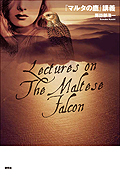
�ء֥ޥ륿����ֵ���
��ˬ������
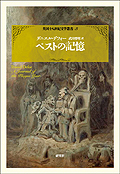
���إڥ��Ȥε��������ɤि����Ͽޡ�ɸ�դ� �Ԥ������ �������������ɤǤ��ޤ���
��̾���ɸ��õ����褦�ˡ�����åɤ�ä�����ΤǤ����إڥ��Ȥε�����
���˥��롦�ǥե��������ľ���-
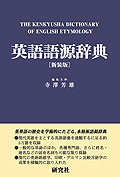
�رѸ�츻��ŵ�ο����ǡϡ�
��߷˧ͺ -
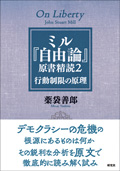
�إߥ�ؼ�ͳ���ٸ������ɣ���
������Ϻ -
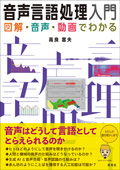
�ز���������������
�������� -

�ء��������ӱѽϸ� ������ 1515��
�ж������Τ��ůɧ�����Ĺ��� -
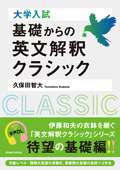
�����������ä���α�ʸ���饷�å���
���������� -

�ؤ�äȥ����ꥹ�Ѹ�Ǥ���٤ꤿ�����ҿ����ǡӡ�
����ľ�����ʥǥ������ޥ��å��ˡ� -
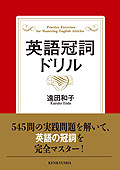
�رѸ촧��ɥ���
�����»� -
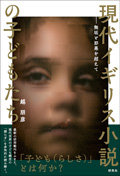
�ظ��奤���ꥹ����λҤɤ⤿����
����ɧ




